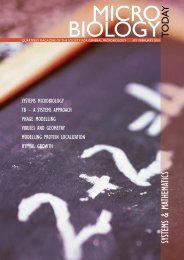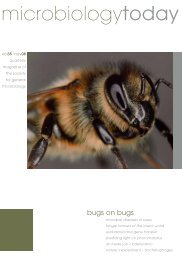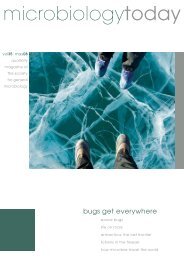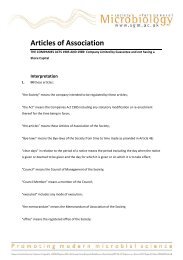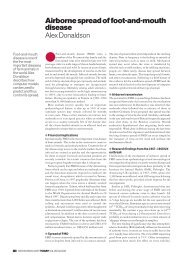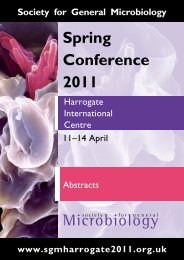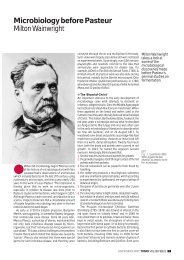final report - ARCHIVE: Defra
final report - ARCHIVE: Defra
final report - ARCHIVE: Defra
Create successful ePaper yourself
Turn your PDF publications into a flip-book with our unique Google optimized e-Paper software.
7 MANAGEMENT TOOLS<br />
7.1 Recommendations of the Krebs Report and subsequent research<br />
7.1.1 The Krebs Report made a number of recommendations for research, for example in areas such as<br />
diagnosis, epidemiology and vaccine development, that were seen as relevant to the development of<br />
new or existing management options in the medium to long-term. Research of this type is considered<br />
in previous sections of our <strong>report</strong>. Here, we consider recommendations that, while also containing a<br />
research aspect, were directly relevant to the immediate management of bTB in cattle.<br />
7.1.2 Three major recommendations of this type were made, namely that: (i) a controlled trial be carried<br />
out of two culling methods (proactive and reactive culling) to investigate the impact of these on herd<br />
breakdown rates; (ii) more, and transparent, data on herd breakdowns should be collected to assess the<br />
correlates of local variation in risk, taking into account variables such as badger presence, husbandry<br />
practices, climate, landscape, etc.; and (iii) an experiment be carried out involving the manipulation of<br />
husbandry practices, with herd breakdown rate as dependent variable (Krebs et al., 1997).<br />
7.1.3 The first of these recommendations, that a trial of culling methods be undertaken, was fully implemented<br />
in the form of the RBCT (Bourne, 2007). Briefly, the RBCT showed that reactive culling failed to<br />
reduce, and may even have increased, the incidence of bTB in cattle. As a result of this finding, the<br />
reactive culling part of the trial was terminated and reactive culling is no longer regarded as a viable<br />
control option. With respect to proactive culling, the trial showed that while this did reduce cattle bTB<br />
within the culled areas, it increased it in a region, about 2 km wide, immediately surrounding each of<br />
the culled areas (the so-called ‘edge effect’). As a result of this finding, the ISG concluded that proactive<br />
culling was not cost-effective (see also sections 7.2–7.5).<br />
7.1.4 The second of the Krebs Report recommendations, concerning the collection of better data on herd<br />
breakdowns, was implemented in the form of a questionnaire survey. The initial intention was to<br />
collect detailed data on every breakdown that occurred within the RBCT trial areas, and on three<br />
times as many control farms, using a questionnaire called TB99. For logistical reasons, the survey was<br />
subsequently scaled down and a simplified version of the questionnaire (CCS2005) was introduced,<br />
but a substantial amount of data were nevertheless collected. Unfortunately, while the analysis of these<br />
51



